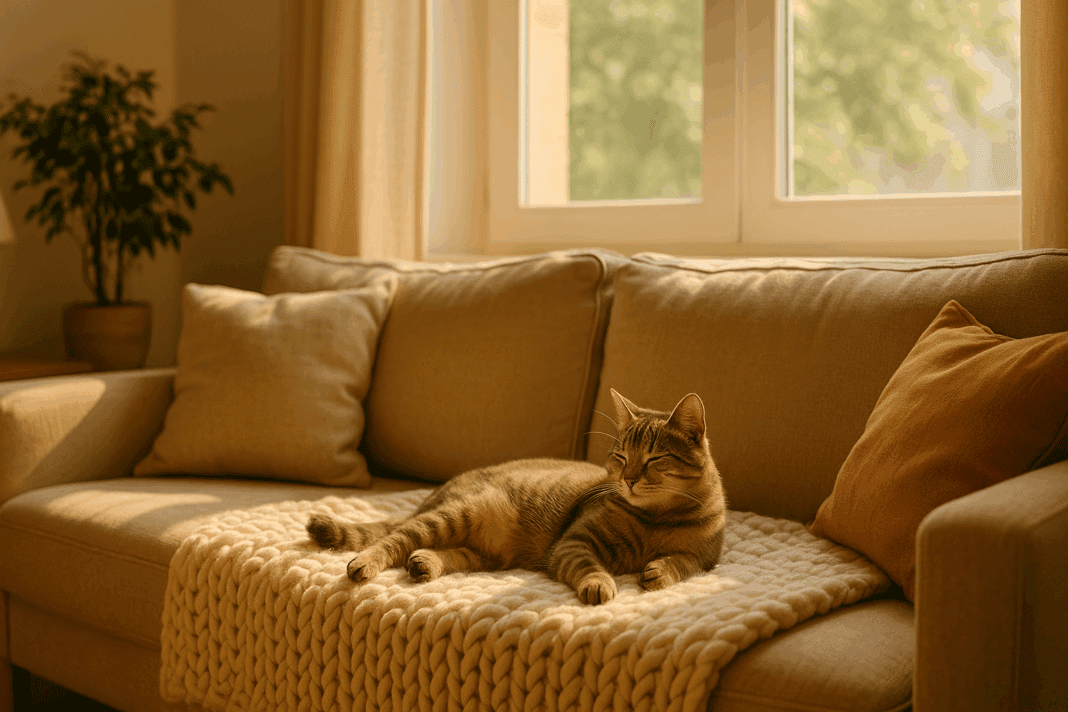Stress can take a toll on a cat’s health, but Dr. Elsey’s has developed strategies and products that help ease anxiety. Learn about stress-relief solutions, from calming litter to behavior aids, and how Dr. Elsey’s products can help your cat feel safe, secure, and at peace in its environment.
Housecats may seem to live in a world of relaxation and leisure, but the reality is that they, too, can experience stress. For cats, stress can manifest in numerous ways, affecting both their physical and mental well-being, and it may not always be apparent to their human companions. Stress in cats can lead to various health issues, behavioral changes, and a diminished quality of life. That said, there are ways to not only combat cat stress but also to keep your cat’s mental wellness in top form. This article will delve into the causes of feline stress, its impact on health, and the various solutions available to reduce stress, including modern advancements such as calming litter created by cat care brands like Dr. Elsey’s. By understanding and addressing the sources of stress, cat owners can help their feline friends live happier, healthier lives.
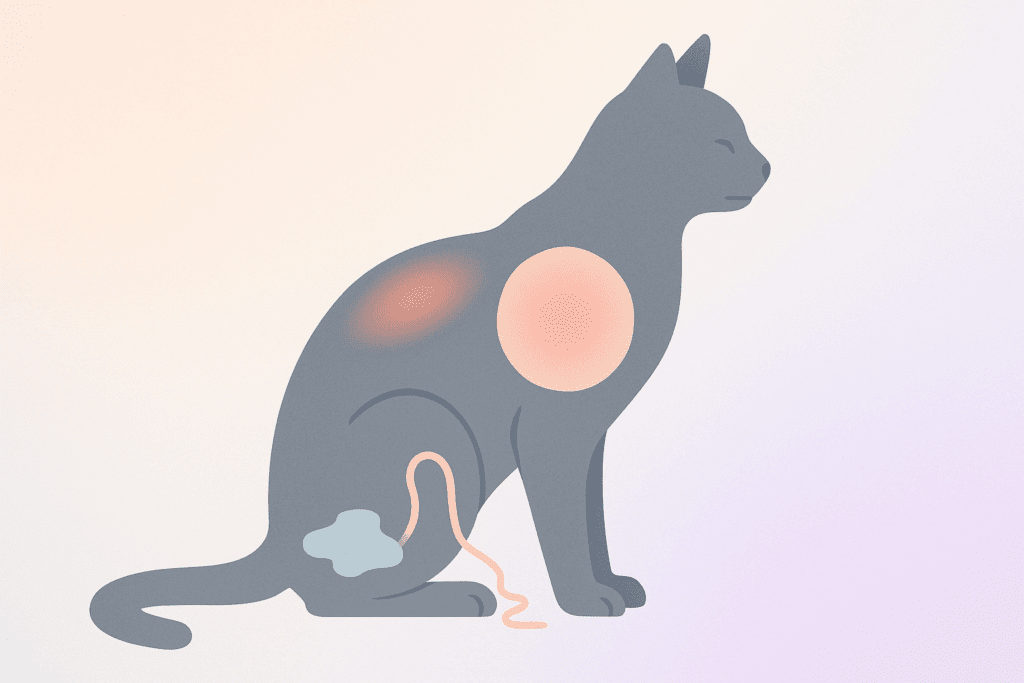
How Stress Affects Cat Health
Stress is more than just an emotional state for cats. It has profound physical consequences that can compromise a cat’s well-being. When a cat experiences stress, its body undergoes several physiological changes. These changes often involve an increased production of cortisol, the body’s primary stress hormone. Elevated cortisol levels can lead to weakened immunity, making cats more susceptible to infections and illnesses. Prolonged stress may also cause gastrointestinal problems, including diarrhea, constipation, and vomiting.
Chronic stress in cats can also lead to behavioral issues, such as excessive grooming (which can result in hair loss), scratching, or even house soiling. Cats may also become more irritable, withdrawn, or aggressive, negatively affecting their relationship with their human companions. The correlation between stress and the onset of serious conditions like feline lower urinary tract disease (FLUTD) and other health problems highlights the importance of recognizing and mitigating stress in our feline friends.
Causes of Stress in Cats
Environmental Changes
One of the leading causes of stress in cats is environmental change. Cats are creatures of habit, and any significant alteration to their environment can cause anxiety. Moving to a new home, rearranging furniture, or even introducing a new pet or family member into the household can disrupt their sense of stability. Cats rely heavily on familiarity, so sudden changes can lead to feelings of uncertainty and fear.
According to research from feline behavior experts like the International Cat Care Foundation, providing a predictable environment with plenty of safe spaces can help reduce stress caused by environmental shifts. Offering familiar objects such as a favorite blanket or toys can provide comfort and reassure the cat that, despite changes, there are still constants they can rely on.
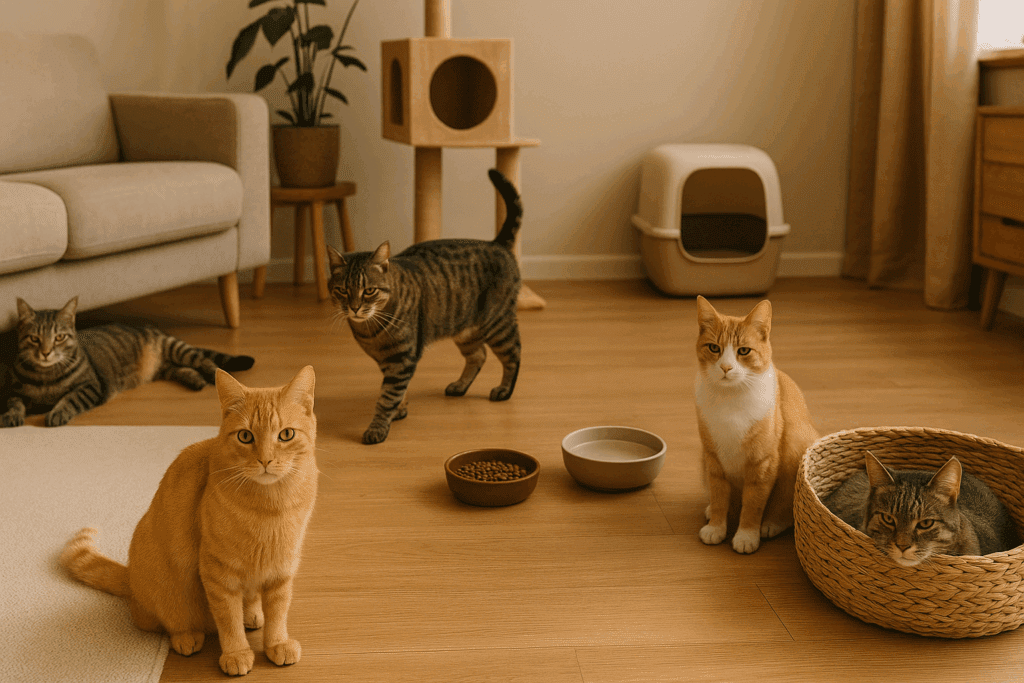
Social Stress
While some cats are more social than others, many felines experience stress in multi-cat households or when they feel threatened by another animal in their territory. Social stress can manifest when cats compete for resources such as food, water, litter boxes, or even attention from their owner. Even seemingly harmonious multi-cat homes can sometimes have underlying tension that may go unnoticed by human caregivers.
To minimize social stress, it’s crucial to provide multiple resources throughout the home. The “one per cat plus one” rule—offering one food bowl, water bowl, and litter box per cat, plus one extra—can help reduce competition. Dr. Elsey’s, a trusted name in feline health and wellness, advocates for the strategic placement of these resources to ensure cats can access them without conflict.
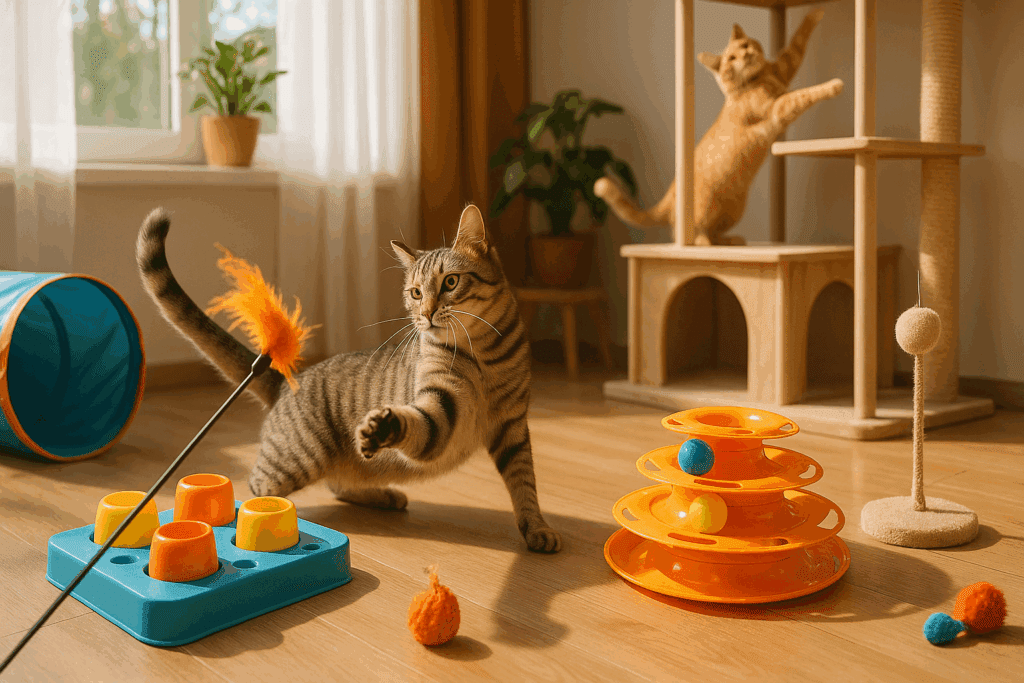
Lack of Mental and Physical Stimulation
Cats, despite their reputation for lounging, need both mental and physical stimulation. A lack of enrichment can lead to boredom, which in turn can cause stress. When cats don’t have enough opportunities to engage in their natural behaviors, such as hunting, climbing, or exploring, they can become frustrated and anxious.
Behavioral experts recommend providing a variety of toys, puzzles, and climbing structures to keep cats mentally and physically engaged. Regular playtime, especially sessions that mimic hunting, can alleviate stress and provide the necessary outlets for a cat’s energy. Puzzle feeders, window perches, and interactive toys can all help reduce boredom and the stress that accompanies inactivity.
Health Issues and Discomfort
Underlying health problems can also be a significant source of stress in cats. Conditions such as dental disease, arthritis, and gastrointestinal disorders can cause chronic pain and discomfort, leading to behavioral changes that are often mistaken for stress alone. Cats are notoriously good at hiding their pain, which makes it even more important for owners to be vigilant in recognizing subtle signs of discomfort, such as changes in appetite, grooming habits, or litter box behavior.
Regular veterinary check-ups are crucial to identifying and treating health problems before they cause undue stress. Routine health screenings and dental care can alleviate physical discomfort and reduce overall stress in cats.
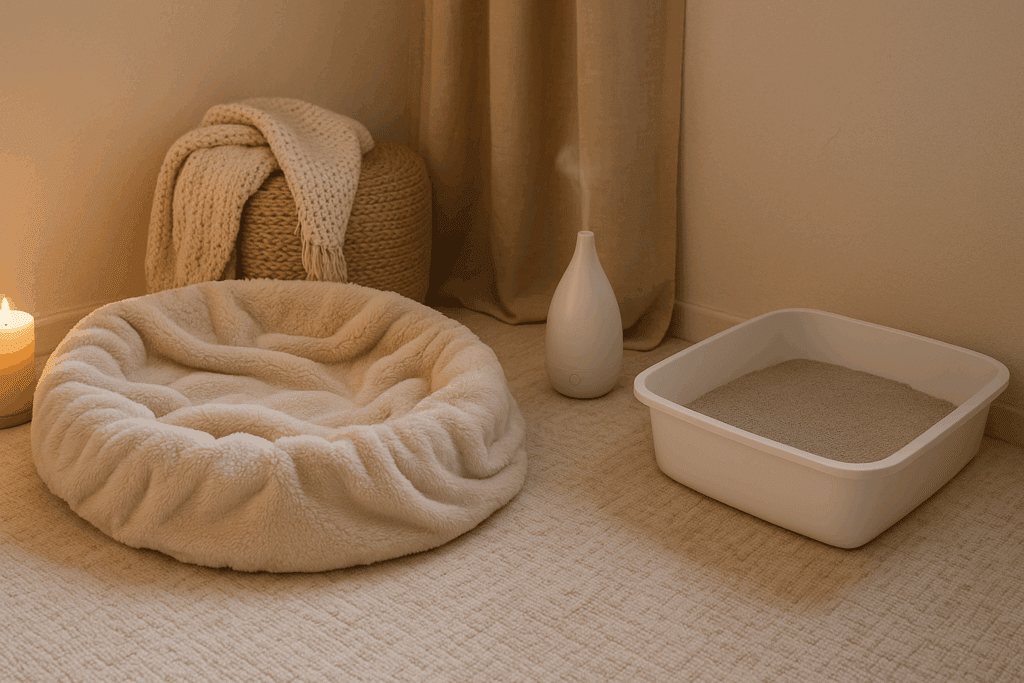
Stress-Relief Solutions for Cats
Calming Litter and Environmental Aids
One innovative approach to reducing stress in cats is the use of calming litter. Certain cat-friendly brands, including veterinary-approved brands such as Dr. Elsey’s, offer specially formulated litters that contain calming agents, such as natural herbs or pheromones, designed to promote relaxation in cats. For example, Dr. Elsey’s Crystal Attract and Stress Protection cat litters are designed to help create a more peaceful environment in the litter box area, reducing anxiety related to litter box use—an issue many cats face, particularly when stressed.
Calming sprays, diffusers, and wipes infused with synthetic feline pheromones are also available to help soothe stressed cats. These products mimic the natural pheromones that cats release when they feel safe and content, encouraging a sense of security and reducing anxiety in unfamiliar or stressful situations.
Behavioral Enrichment
Providing a stimulating environment is key to reducing stress in housecats. This includes not only physical enrichment, like climbing trees or scratching posts, but also mental enrichment. Puzzle feeders, for example, encourage cats to work for their food, tapping into their natural hunting instincts and providing mental stimulation. Additionally, rotating toys and regularly changing up the play environment can keep things exciting and prevent boredom from setting in.
Interactive play sessions with owners are particularly effective at reducing stress. Activities that mimic the hunt, such as using feather toys or laser pointers, can help cats burn off excess energy and relieve frustration. Behavioral enrichment is a holistic way to address both physical and emotional stress in cats, promoting overall wellness.
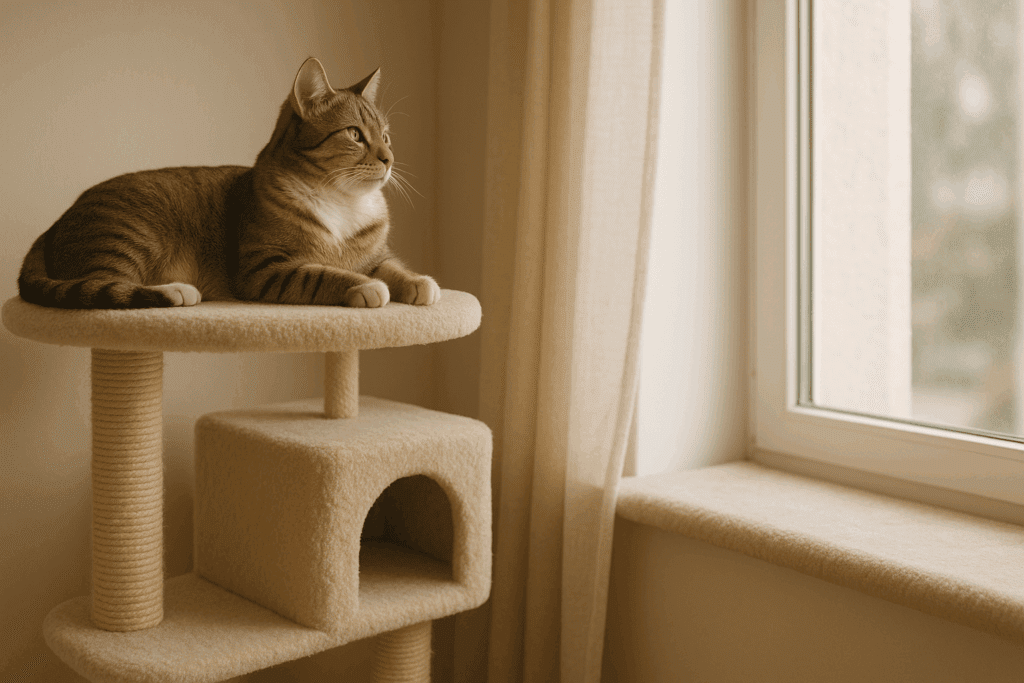
Safe Spaces and Territorial Security
Cats need to feel safe and in control of their surroundings. Providing safe spaces where they can retreat and observe their environment without feeling threatened is essential for reducing stress. These spaces could be elevated perches, hiding spots, or quiet areas of the house where the cat can relax undisturbed. In multi-cat households, ensuring that each cat has access to its own safe territory can prevent feelings of insecurity and conflict.
Maintaining a predictable routine and ensuring that cats have access to their own personal spaces can significantly reduce anxiety. This is especially important for cats that may feel overwhelmed by household activity or competition with other pets.
Diet and Nutritional Support
Nutrition plays an integral role in managing stress in cats. Certain diets are designed to reduce anxiety by incorporating ingredients that support calmness and relaxation, such as tryptophan or omega-3 fatty acids. These diets can complement other stress-relief strategies, helping to keep a cat’s mood balanced and promoting overall health.
Additionally, ensuring that cats are fed consistently and have access to fresh water at all times can prevent stress-related behaviors around mealtime. Some cats may also benefit from the use of calming supplements, such as those containing L-theanine or casein, both of which have been shown to reduce anxiety in felines.
Routine Veterinary Care and Preventive Measures
Regular veterinary check-ups are one of the most effective ways to manage stress in cats. Ensuring that a cat is in good health and free from pain or illness is the foundation of stress management. Preventive care, including vaccinations, dental cleanings, and routine blood work, can help detect potential problems early before they lead to chronic stress.
Additionally, veterinarians can provide guidance on managing stress through behavioral strategies, nutritional support, or medical interventions if necessary. Combining veterinary care with environmental management is key to creating a well-rounded approach to stress relief in cats.
Manage Your Cat’s Mental Well-Being
Stress in housecats is a multifaceted issue that can significantly impact both their physical health and overall quality of life. Recognizing the causes of stress, whether they stem from environmental changes, social dynamics, boredom, or health issues, is the first step toward providing effective relief. With the help of stress relief solutions like calming litter, behavioral enrichment, safe spaces, and proper nutrition, cat owners can create a supportive and calming environment for their feline friends. Make sure to consult with veterinary experts and stay informed on the latest developments in feline care so your cat can continue leading a happier, more holistic lifestyle.
Further Reading:
1. Stress and Feline Health — Veterinary Clinics of North America: Small Animal Practice
2. Stress in cats — International Cat Care
3. AAFP and ISFM Feline Environmental Needs Guidelines — Journal of Feline Medicine and Surgery

